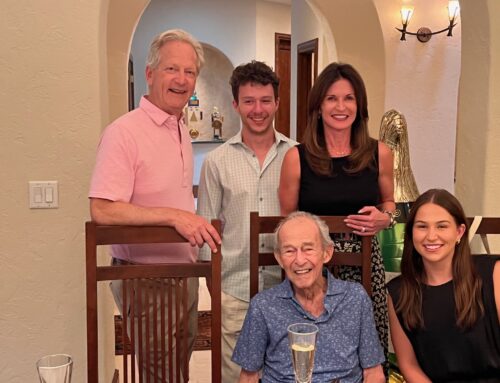By Monica Johnson of Vision with No Sight
In 1984, I was diagnosed with Type 1 Diabetes at the age of 11. I grew up on 156 acres of land in a small town north of Syracuse, New York, called Bernhards Bay. Bernhards Bay is a small hamlet in Oswego County along the north shore of Oneida Lake. The house I lived in has been in my family for well over two hundred years. I loved everything about my twenty-seven years living on a farm and riding my horses.
Being diagnosed with diabetes while in sixth grade was a very tough experience. Within a month, my weight dropped drastically from 110 pounds to 70 pounds. As I later understood what was happening to my body, in people with diabetes, insufficient insulin prevents the body from getting glucose from the blood into the body’s cells to use as energy. When this occurs, the body starts burning fat and muscle for energy, causing a reduction in overall body weight. Little did I know, I was experiencing the early warning signs; weight loss, extreme thirst and frequent urination.
 On Thanksgiving night in 1984, it became too much to bear when my dad had to carry me to the bathroom because I couldn’t get there on my own. I spent two weeks in the hospital learning about insulin shots and all the different tests that come with a type 1 diabetes diagnosis. This was terrifying as an 11-year-old, not knowing what life would be like when I walked out of the hospital doors. How would I give myself insulin every day? Would I be able to do the normal things other kids do, like enjoy birthday cake? There were so many unknowns and I felt so lost.
On Thanksgiving night in 1984, it became too much to bear when my dad had to carry me to the bathroom because I couldn’t get there on my own. I spent two weeks in the hospital learning about insulin shots and all the different tests that come with a type 1 diabetes diagnosis. This was terrifying as an 11-year-old, not knowing what life would be like when I walked out of the hospital doors. How would I give myself insulin every day? Would I be able to do the normal things other kids do, like enjoy birthday cake? There were so many unknowns and I felt so lost.
Since many people didn’t know about the disease in 1984, my classmates thought it was contagious and they could catch it by being around me. When I returned to school, I faced rejection and bullying from my closest friends. This made me want to hide my diabetes from everyone including my family. If others knew I had diabetes, they wouldn’t want to be my friend. Growing up is not easy, but growing up with a chronic condition is much more difficult.
In not wanting to appear different from others, I neglected proper maintenance of my diabetes.
Complications caused me to be near death when I was 28 years old. I started to notice that my vision was getting blurry and my primary care doctor suggested I visit an eye doctor to see what was going on. I left the eye doctor’s office with a prescription for glasses, but felt there was more to it. It got to the point where my prescription was changing every three months. In one visit to the eye doctor, they told me they were just starting to see signs of diabetic retinopathy. JUST starting? That’s when I knew I needed to be an advocate for myself because I had gone from being totally sighted to losing my sight within 6 months. It was almost like a dimmer switch had been turned on and things were getting darker little by little. On February 9, 2002, at the age of 29, I woke up and that was the last time I saw daylight. The first words I uttered were, “My life is over and I’ll never be able to do anything ever again.”
When I first went blind, my mom invited a blind person to come to the house and tell me how successful I could be as a blind person. I wasn’t ready for that yet. I was newly blind and when this person left our house, I could hear him touching and feeling objects around our house to find his way out. I was so mad at my mom and couldn’t believe she would do that to me. After five years of being cared for by my mother and stepfather, while deep in depression, I was doing nothing but lying in bed listening to the radio or television.

Way back then, I was struggling to find out who I was. I couldn’t figure out my purpose in life and why I was here until I had a defining moment. I was sitting on the couch listening to the television when I heard a voice tell me to get up and do dishes. My transformation progressed over the years from being a physical, visual, and emotional invalid to achieving numerous personal victories. Aurora of Central New York taught me how to return to normal life given my visual impairment. I went through two and a half years of training with them and I’m now able to live on my own. They taught me to navigate the bus system and gave me confidence to travel on my own. The ARISE Foundation out of Oswego County, NY, found a place for me to live and made sure it was compatible with my needs. I’ve also had the opportunity to share my story with Welch Allyn®, creator of RetinaVue® Care Delivery Model, which enables primary care providers to examine patients for diabetic retinopathy at their office. I wish this option was around in 1984, but I am so impressed with how they want people to have the best care possible.
Some people look at my blindness as a tragedy, but I look at it as a blessing. There were times diabetes made me feel unworthy, but I know my purpose here is to help people through motivational speaking. I get to empower and encourage people every day. If I’m able to help one person, I’ve already helped to change the world. If I can encourage someone to find peace with his or her diabetes or blindness, I’ve done my job.





